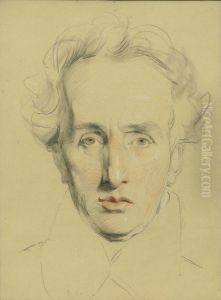Samuel Laurence Paintings
Samuel Laurence was a distinguished British portrait artist known for his exceptional skill in capturing the essence of his subjects. Born in 1812, Laurence's early life is somewhat obscure, but it is evident that he had a natural talent for art from a young age. He pursued his passion for painting by studying art, although the specifics of his education remain unclear. Laurence quickly established himself as a portraitist, attracting a clientele that included some of the most prominent figures of his time.
Throughout the mid-19th century, Laurence's reputation grew, and he became particularly noted for his portraits of literary and scientific figures. Among his most famous subjects were the Brontë sisters, Charles Dickens, and scientist Michael Faraday, showcasing his ability to portray a wide range of personalities. Laurence's style was characterized by its insightful depiction of the character and mood of his sitters, often capturing a thoughtful or introspective quality.
Despite his success, Laurence led a relatively private life, and details about his personal experiences and relationships are scarce. He was, however, deeply embedded in the cultural circles of the day, counting among his friends several of the subjects he painted. This connection to the intellectual and artistic elite of the period provided him with continuous inspiration and subjects for his work.
Laurence's contributions to portrait art were recognized in his time, but he has not been as widely remembered as some of his contemporaries. Nevertheless, his work remains significant for its depth of expression and technical mastery. Samuel Laurence died in 1884, leaving behind a legacy of portraits that continue to be admired for their insight into the character and spirit of the Victorian era.














